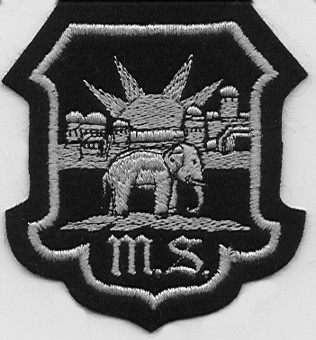Serving in His Majesty's Forces - David Greswolde Lewis, Known as "Tommy" Lewis,
The Red Baron's last Victim ....
Prisoner of War at Graudenz
1918
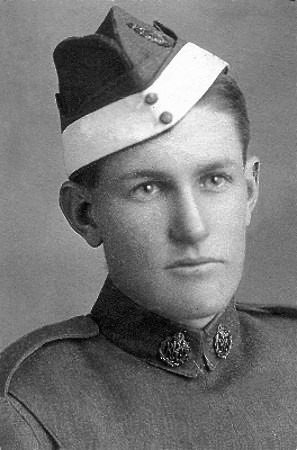
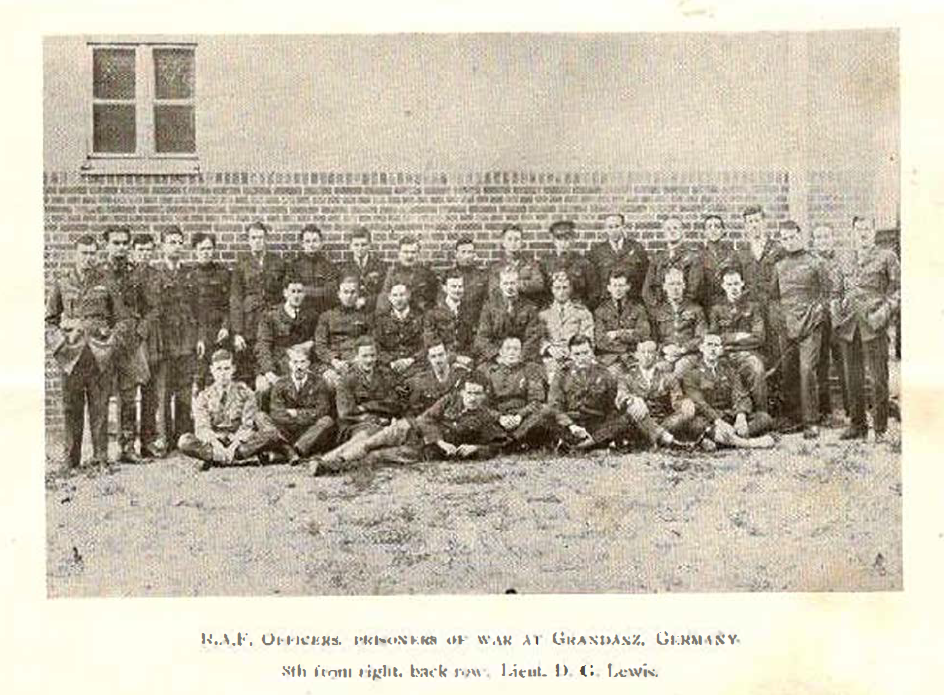
Extract from a display by the Rhodesian
Services Assn in Tauranga, New Zealand with photo of David
Greswolde Lewis:
Baron von Richtofen’s Combat Report from 20th April
1918 1843 hrs, north-east of Villers-Bretonneux.
Three minutes after I had brought down the first machine (Note – this
was Raymond-Barker), I attacked a second Camel of the same enemy
squadron. The adversary dived, caught his machine and repeated this
manoeuvre several times. I approached him as near as possible when
fighting and fired 50 bullets until the machine began to burn. The body
of the machine was burned in the air, the remnants dashed to the ground,
north-east of Villers-Bretonneux. (signed Baron von Richtofen). Lewis
recorded that he was hit and went down. He’d seen the red Triplane come
round behind his tail and Richtofen’s bullets set his seven gallon
gravity tank afire.
Lewis, however, was more fortunate
than his CO (Raymond-Barker) had been, and somehow survived the impact
with the ground. He came down only some 50 yards from Raymond-Barker’s
(Richtofen’s victory No. 79) machine the wreckage of which was burning
furiously. As he stood between the two burning machines, Lewis
saw a Triplane fly by at low level, the pilot waving. Presumably
this was Richtofen and he must have assumed the man, Lewis,
to be a German soldier, for it seems certain he believed his two
victories had resulted in two men dead.
He undoubtable wanted someone on the ground to
recognise his red machine in order to gain confirmation of his two
kills. Lieutenant Hans Weiss of Jasta 11 was credited with a Camel shot
down, south-west of Bois de Hamel at 18:40, but this appears to be a 201
Squadron pilot, Second Lieutenant G R Riley RFC (GL) in D6475, returned
wounded having been hit on the left shoulder by a machinegun bullet, his
Camel damaged. There are no apparent personnel losses amongst JG1’s
pilots. Von Richtofen gained his 80th victory and his second of the day,
flying Fokker Dr 1 No.425/17. This machine is understood to have had red
sides and top deck fuselage, red upper surfaces on all wings, struts,
wheel covers and tail, but white rudder. The former Patee crosses had
been overpainted with the new broad style Balken crosses. Wing and
fuselage undersurfaces were turquoise. Its engine was 110 hp. Oberuresel
type serial Nr. 2478. This Dr1’s Werke Nr. Was 2009, built in Frankfurt
and first tested on 8th January 1918. It was the same Dr. that von
Richtofen flew out to do battle with 209 Squadron the next day - and
failed to return.
Extract from ‘Under The Guns of
The Red Baron’ Pages 202 and 203
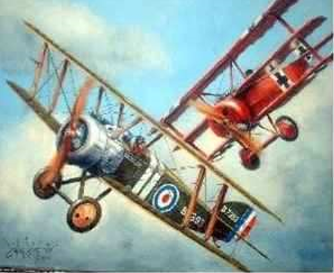
The Red Baron.
The painting above, by Digby Sinclair depicts the dogfight between von
Richtofen and David Lewis who was flying Sopwith Camel No. B7393 3
Squadron RAF Engine No. 101026 WD10398 Guns A6576 & B168 at 1843 hrs,
north-east of Villers-Bretonneux.
The painting is on loan to the Rhodesian Military Display at the
Hauraki Museum Hall in Tauranga. New Zealand.

Permission to reproduce articles of David Greswolde Lewis, Known as
"Tommy" Lewis - January 08, 2018.
I would be delighted if you would share this information.
David
Greswolde (Tommy) Lewis was my uncle (my Dad's older brother) my Dad
John Gordon Lewis also went to Milton and played Rugby - he was born in
1905- died 1989.
Very best wishes,
Diana Armstrong - Denver Colorado USA
"Tommy" Lewis with his plane "Rhodesia".
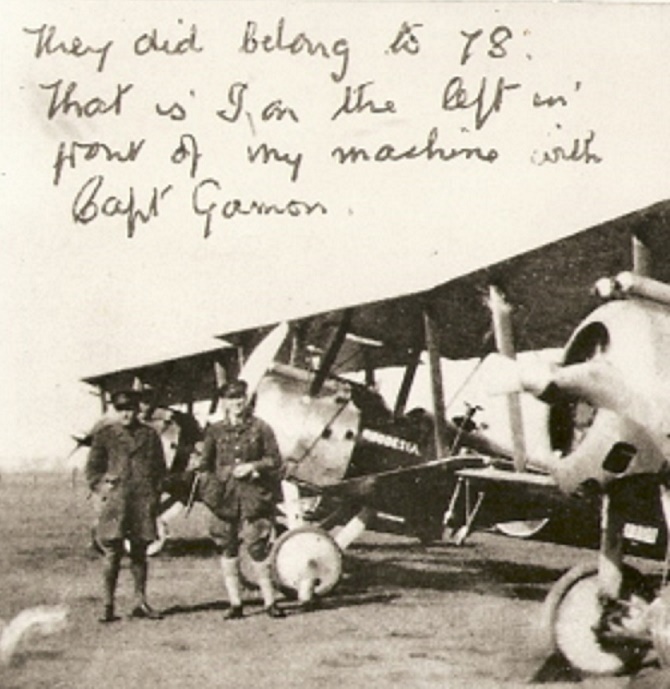
David Greswolde Lewis was born in Bulawayo, Rhodesia on 15th October
1898 and died in Salisbury (Harare) in 1978.
Second Lieutenant in the Air Force (RAF/RFC), Royal Flying Corps.
Second Lieutenant in the Air Force (RAF/RFC), Royal Flying Corps, 78
Squadron.
Second Lieutenant in the Air Force (RAF/RFC), Royal Flying Corps, 3
Squadron.
When I was seven or eight years old I was sent to St. John's
School in Bulawayo and was there until the Milton
School was opened under the headmastership of E.B. de Beer who
later became headmaster at St. George's Cape Town. My only brother (John
Gordon) was born in Bulawayo. He eventually moved to Durban there he
owned a heavy transport company. He married and had a son and a
daughter. No great emphasis was placed on examinations, except terminal
ones and so long as one played games, that satisfied the masters. In
sport, especially, cricket, our main opponents we St. George's which had
some very good players such as Aidan Campbell who subsequently became a
prominent doctor.
Whilst at school the then Mr. Brady (subsequently Colonel KBBC) who was
a left-arm bowler and played in the Irish Eleven, took An Eleven,
including me, to play against a side at Livingstone where a match was
played with a coir matting as the wicket. This was not strange for us as
we had no turf wickets at that stage. Later I played rugger, cricket and
tennis for both Matabeleland and Midlands. My position on the rugby
field was .. for I had a fairly good kick with either foot.
I reported to the War Office armed with a recommendation from Mr.
Justice Russell for consideration for a commission in my father's old
regiment, The Royal Welch Fusiliers of which he had been a member before
coming to South Africa. I was sent to the War Office in Berkhamsted
where I enlisted in the Inns of Court OTC.
In Number 3 Squadron located at Warloy talk of Baron von Richthofen and
his "Circus' which was having great success under his leadership and
skill. In the particular engagement, which took place in German occupied
France four miles north east of Villers-Bretoneaux, in which I took
part, the first person to be hit by von Richthofen was my Commanding
Officer, Major Raymond Barker, who with his machine on hire plunged
earthwards.
A few minutes later I was hit and set alight by the same gentleman and
could do nothing but make for the ground and since my petrol tank (now
on fire) was behind, this act kept the flames billowing away from me,
but since petrol caught alight which was on the floor of the machine it
blew up in my face which was quite badly burnt. I managed to land with
little fabric left on the ailerons and elevators and walker over to the
German support trenches watched by the German infantry who could quite
easily have shot me had they wished to. I was taken down into a dug-out
and there given some schnapps by a German officer who had my burns
tended and sent me in the charge of two Uhlans to Peronne Hospital.
After a long train journey across Germany I eventually after
interrogation in Karlsruhe was detained in a prisoner-of-war camp in
Graudenz 60 miles south of Danzig on the Vistula River which, of course,
is the boundary between Russia and Germany. All the buildings here had
double windows because of the bitterness of the winter so far east. The
allied blockade of Germany had its effect on our food supply but the
position was improved when the food parcels started arriving from the
Red Cross. I was taken prisoner on the 20th April 1918 but my first
parcel did not catch up with me until October 1918 when living was made
much more pleasant. We received one loaf of white bread a week which
came from Denmark but was much nicer than the German loaf. With food
parcels arriving from England for each British prisoner there then was a
surplus of food and since there was a ten foot barbed wire fence
surrounding the building in which we lived, we used to throw food over
the fence to the German children waiting outside. Treatment by the armed
sentries varied with the character of the Commandant and I know of no
complaints against our German officers although stories of the treatment
meted out in Holtzminden shewed I was lucky to be where I was.
The huge exercise yard was well-lit and when these lights were turned on
at night it was the signal for us to enter our rooms in the building
(barrack). I think that in all camps of detention the treatment by the
Germans varied with the behaviour of the prisoners and quite rightly so,
for after all, it was wartime, and we were wont to say to the sentries
"Deutschland kaput" and of course their retort was "nein nein England
kaput". At the top floor of each of the two buildings housing prisoners
there were a number of cells in which officers were sometimes sentenced
to remain for various periods following misdemeanours. Sentries were
posted in the corridors but readily gave permission to officers who
wished to visit inmates.
On the 2nd December 1918, I was repatriated to England landing at Leith
in Scotland from a Russian Hospital ship on which there were over 2,000
prisoners of all unites of the British Army. We were greeted on the
docks by an officer of staff rank sent by the War Office who gave a
speech of welcome. In the sheds on the quay we were handed soap, towels,
cigarettes and food and then conveyed by train to Ripon and from there
dispersed to our relatives. In May 1919 together with a number of other
officers including Major Lewis, the father of the present Mr. Justice
Lewis whom few people know was born in England, we embarked ship for
South Africa.
Written in Gwanda, in Rhodesia (Zimbabwe).
